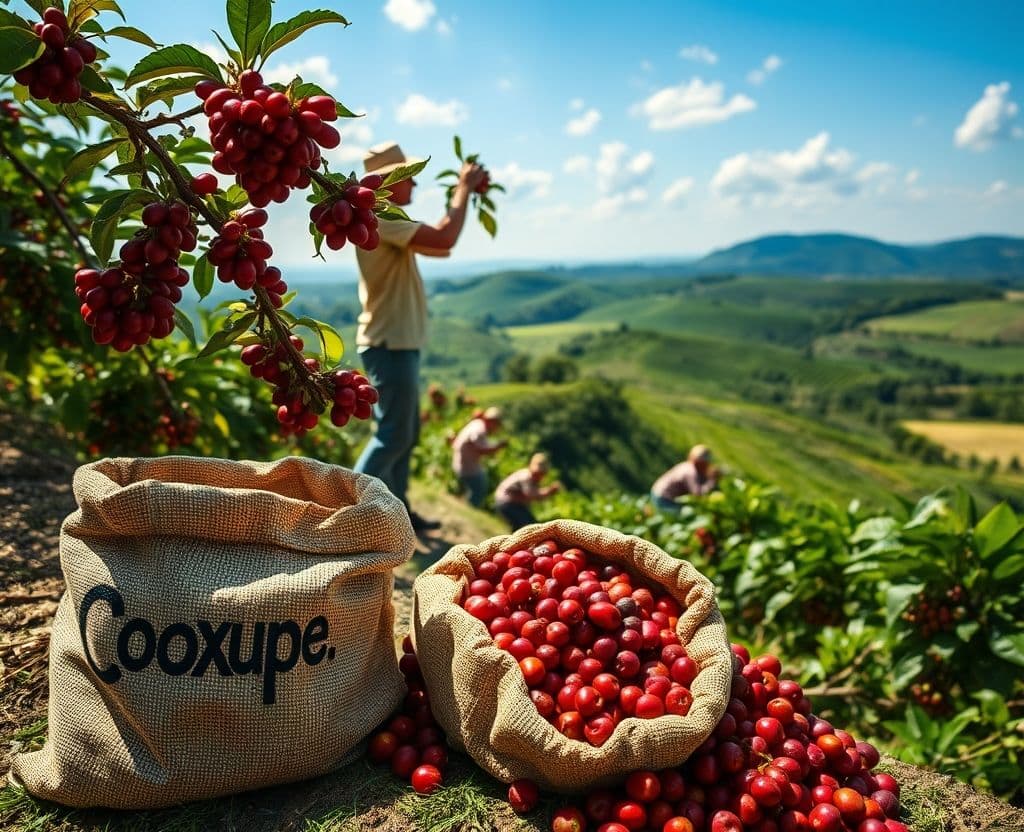Coffee prices are under ongoing pressure as Brazil’s harvest continues to advance, influencing both arabica and robusta markets. On Thursday, September arabica futures (KCU25) closed down by 1.60 cents (-0.55%), while September ICE robusta futures (RMU25) edged up by $25 (+0.69%), signaling mixed market performance.
The Brazilian coffee harvest remains a key driver behind price movements. Cooxupé, the country’s largest coffee cooperative and exporter, reported that 31% of its harvest was completed as of June 27—down from 42% at the same point last year. Dry weather forecasts for the coming days in major growing regions are expected to accelerate the pace of picking.
Meanwhile, data from Safras & Mercado indicates that Brazil’s 2025/26 harvest was 35% complete by June 11. The robusta harvest reached 49% completion, while the arabica harvest lagged at 26%, slowed by heavy rainfall in key areas. According to Somar Meteorologia, Minas Gerais—Brazil’s largest arabica-producing region—received 5 mm of rainfall during the week ending June 28, amounting to 714% of the historical average, alleviating earlier dryness concerns and supporting crop development.
Market sentiment is also affected by global production outlooks. The USDA’s Foreign Agricultural Service (FAS) forecasts Brazil’s 2025/26 production at 65 million bags, a modest 0.5% increase year-over-year. Vietnam’s output is projected to rise by 6.9% to a four-year high of 31 million bags. These figures reinforce expectations of ample supply, contributing to downward price pressure.
Inventories also play a role in the shifting dynamics. ICE-monitored arabica stocks recently hit a 4.75-month high of 892,468 bags in late May and remain elevated at 842,223 bags. In contrast, robusta inventories dipped to a six-week low of 5,108 lots last week, though they have since recovered slightly to 5,153 lots, offering limited support to robusta prices.
Export figures add another layer to the market picture. Cecafé, Brazil’s coffee export council, reported that May exports of green coffee fell by 36% year-over-year to 2.8 million bags—an indicator that could offer some bullish influence on prices. On the other hand, Vietnam continues to see the impact of past droughts. Its 2023/24 coffee production dropped by 20% to 1.472 million metric tons—the smallest harvest in four years. Exports also declined: 2024 shipments fell by 17.1% to 1.35 million metric tons, and the January-May 2025 export figure is down 1.8% year-over-year.
Looking ahead, the USDA’s global outlook signals higher supply. Its biannual report estimates 2025/26 world coffee production will rise by 2.5% to a record 178.68 million bags. This includes a 1.7% decline in arabica output to 97.02 million bags and a 7.9% increase in robusta production to 81.66 million bags. Ending stocks are expected to grow by 4.9% to 22.82 million bags.
Despite the broader increase in supply, consultancy Volcafe forecasts a deeper arabica deficit for the 2025/26 season, projecting a shortfall of 8.5 million bags—widening from the 5.5 million bag deficit estimated for 2024/25. If accurate, this would mark the fifth consecutive year of arabica deficits, potentially setting the stage for renewed volatility.
In summary, coffee markets remain in flux, shaped by Brazil’s harvest pace, improving weather, fluctuating inventories, and shifting global forecasts. While robusta prices show slight signs of support due to tighter inventories and weather impacts in Vietnam, arabica continues to feel the weight of strong supply expectations, especially from Brazil—the world’s largest producer.


